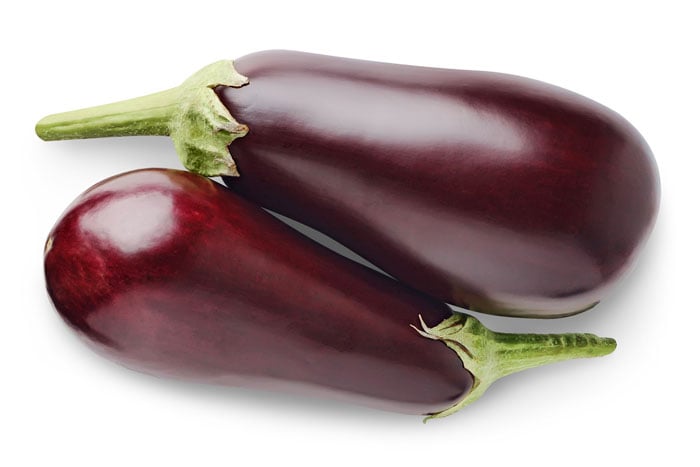
Written By: Sofia Layarda, MPH
Title: Master of Public Health
Alumni: University of California, Berkeley
Last Updated on:

In anticipation of warmer days ahead, we take a look at one of the most popular fruits associated with summer: eggplant. Yes, eggplant is in fact a fruit, from the plant Solanum melongena. It belongs to the same family (Solanaceae) as potatoes, peppers, and tomatoes. While many of us think of eggplants as having deep purple skin, they actually come in many colors and shapes. The plant likes heat and plenty of sun in order to grow and flourish.
Table of Contents

Eggplant is a super low-calorie vehicle for powerful antioxidants. In particular, eggplant skin contains a powerful anthocyanin called nasunin, a super antioxidant that protects cell membranes from oxidative damage. There are also additional antioxidants called phenolic acids contained within eggplant, particularly chlorogenic acid, which has been shown to have anti-cancer, anti-microbial, and anti-LDL (bad) cholesterol properties. The phenolic acids are responsible for the slightly bitter taste of raw eggplant; to reduce this bitterness, sprinkle salt over cut surfaces and let the eggplant slices sit to “sweat” for 30 minutes. Rinse off the salt with water afterwards and pat the slices dry before further preparation.
Eggplant has a meaty, luscious, earthy quality when cooked. Roasted eggplant can be fairly low in calories as long as you are careful with the amount of oil you use. Instead of deep-frying, cut eggplants lengthwise (or into coins, if you prefer) and drizzle two tablespoons of oil over the cut surface before roasting.
Eggplant is actually quite fragile; handle it with care to avoid bruising and use it within a couple of days after purchase. When buying, look for plump, heavy, firm fruits with fully intact skin and a bright green cap and stem. Avoid any with soft, browning, or wet patches. If the eggplant you buy comes wrapped in plastic, remove this wrapping before putting it in the fridge. Do not cut eggplant until you are actually ready to cook because it will deteriorate very quickly.
Alumni: University of California, Berkeley – Sofia believes in bringing back fun and pleasure into everyday eating. She loves cooking, and is constantly experimenting with ingredients, creating recipes and trying them out on family and friends. Her latest interest lies in finding realistic and practical ways of environmentally-friendly food/eating habits.
eggplant, grocery aisle, healthy every month, vegetables
Why Diets Do Not Work and How to UnDiet Podcast
Will A New MyPlate Icon from USDA Change Your Eating Habits?